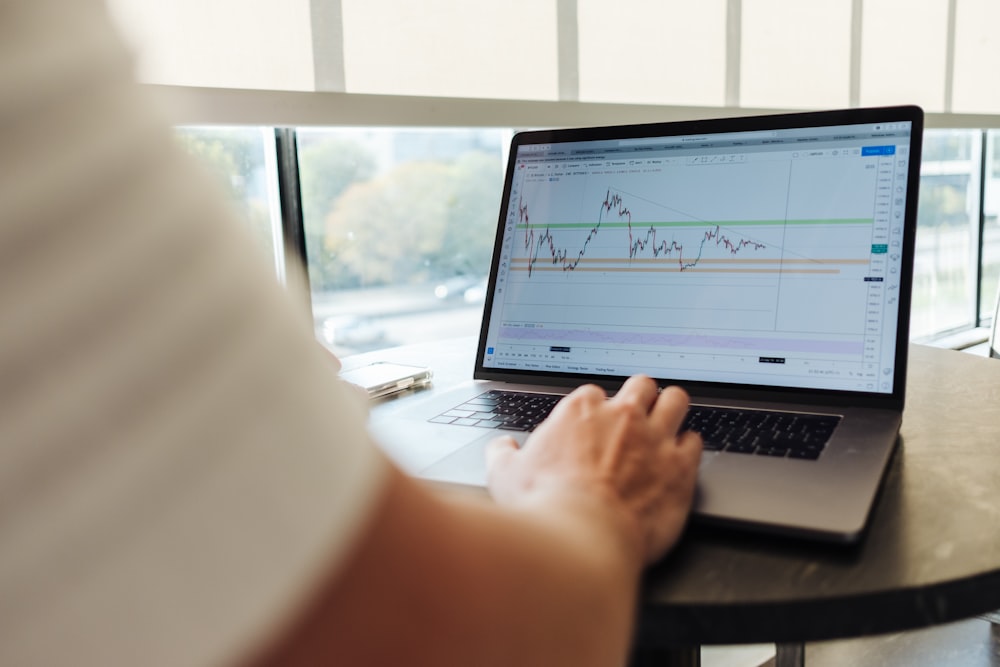Messages From The Yield Curve
Image Source: Unsplash
Traders constantly seek opportunities where the rewards vastly outweigh the risks.They don’t arise as often as one might think – it’s far too common for any of us to overestimate rewards or underestimate risk – but I believe that the potential for a steeper Treasury yield curve is offering that sort of opportunity right now.
The yield curve is a graphical representation of a set of interest rates (y-axis) plotted by dates (x-axis).When one plots US Treasury yields on that type of graph, it is historically normal to see the curve slope upward from left to right.The reason is straightforward.All things being equal, the prices of longer-term bonds change more in relation to changes in rates than their shorter-term counterparts.The higher rates of longer-term bonds tend to reflect investors’ desire to be compensated for that extra risk.
But that is not always the case, nor is it always a perfect upward slope. The current yield curve has a kink, with an inversion in the shortest maturities to 3-years and a normal slope thereafter. This is a pronounced change from one year ago, when the curve was more steeply and nearly fully inverted.
US Treasury Yield Curve, Today (green), 1-Year Ago (yellow)
Source: Bloomberg
The reason for the inversion typically revolves around the market’s expectations for Fed Funds.If investors believe that rate cuts are imminent, as we saw a year ago and still see today (though at a reduced magnitude), we see short-term yields trade above those in the intermediate term.It shows that the Federal Reserve is more concerned about fighting inflation than bolstering the economy. If the expectations for cuts are significant enough – remember there were as many as seven or eight expected at this time last year – then the whole curve can be inverted.
Now think about what might cause the need for aggressive rate cuts.Generally, that is an economy that shows some combination of calmer inflationary expectation and an economy weakening sufficiently to require the jolt from lower rates.We benefitted in 2024 from the virtuous part of that cycle, as inflation concerns ebb without a slumping economy.The market is betting that the scope of potential cuts is smaller than a year ago but still representing a good economy with ebbing inflation.
We can plot the various relationships on another chart.The following is a chart we have used before, showing the relationship between yield curve inversions and recessions.The ability of yield curves as a recession predictor was believed to be sacrosanct until the recent inversion, which has not been followed by a recession.
Since 1985: 2- vs. 10-year Treasury Yields (white); 3-mo vs. 10-year Treasury Yields (blue); NBER recession start (red) and end dates (green)
Source: Bloomberg
I was tempted to add a “yet” to the end of prior sentence, but I declined because it would have seemed snarky, and that was not intended.The chart shows that the recessions only begin after the inversions revert to normalcy.Recession odds have ebbed after fears arose earlier this year as the market demonstrated increasingly less concern about tariffs inducing both a slowdown and a resurgence of inflation.
As a result, we find ourselves at an interesting crossroads.The 2-10 spread has been quite stable since the April tariff announcements even as the 3mo-10yr spread threatens to invert once again.The increasing likelihood for rate cuts is certainly pushing down the front end of the curve.
Year-to-date: 2- vs. 10-year Treasury Yields (white); 3-mo vs. 10-year Treasury Yields (blue)
Source: Bloomberg
That said, I find it difficult to believe that either segment of the curve will revert to the type of inversions that recently prevailed. Instead, if we revert to more normal yield curve relationships, that will imply a somewhat, if not significantly, steeper curve. This can occur one of two ways: the more beneficial would be if rate cuts arrive and fail to spur inflation; the far scarier would be if inflationary expectations reignite. In the prior case, rates are lower to stable across the curve; in the latter, we get modestly lower short-term rates, if at all, while the longer-term rates rise. It’s odd to have a situation where bulls and bears can consider putting on the same trade – one positing a steeper yield curve.
Bloomberg link
More By This Author:
Short-Termism Rules
Not A Figma Of Our Imagination
Newton’s Third Law Of Markets?
Disclosure: The analysis in this material is provided for information only and is not and should not be construed as an offer to sell or the solicitation of an offer to buy any security. To the ...
more



